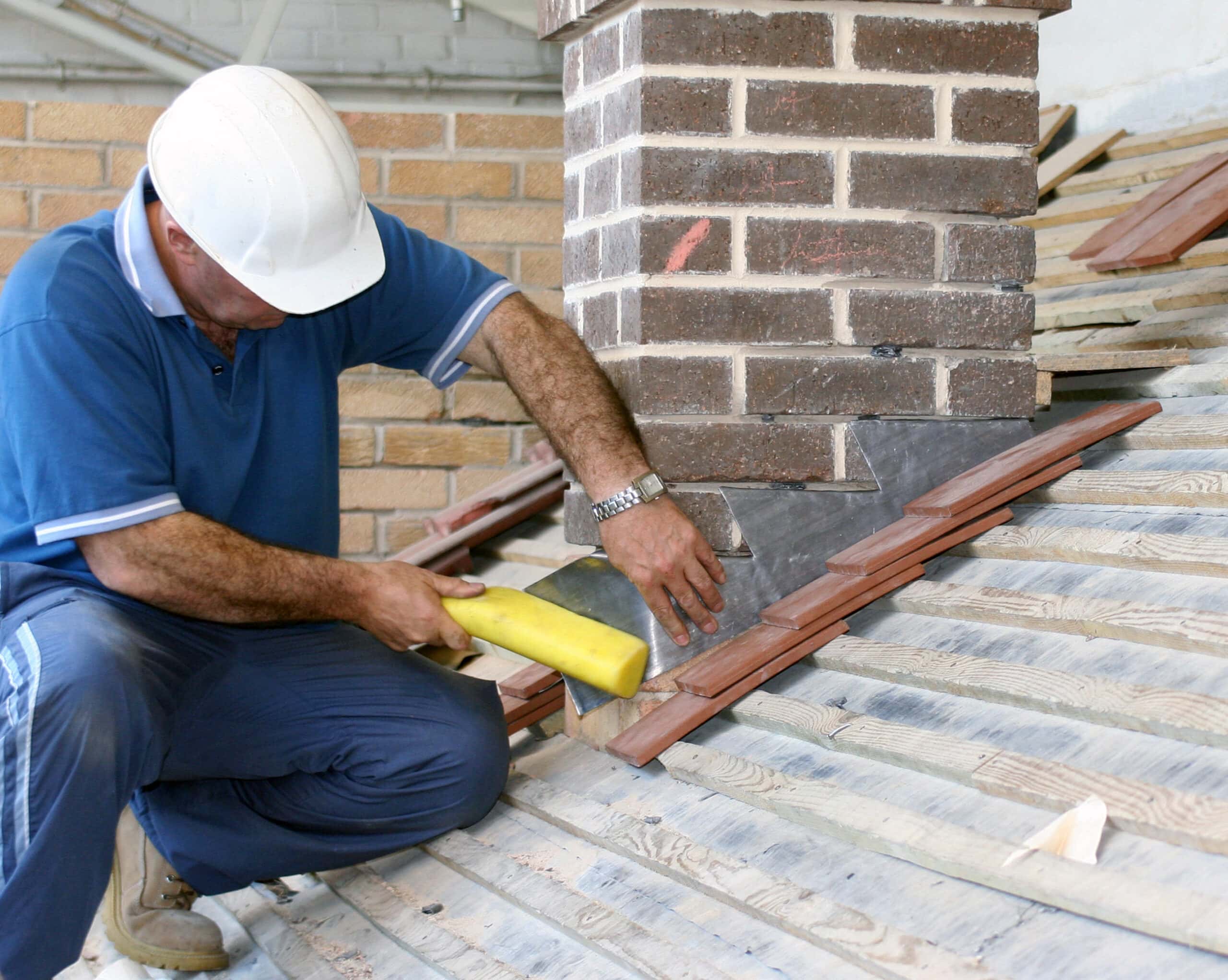Flashing is a thin sheet of material that prevents water from entering cracks and other openings in a roof. Roofers apply the material under the shingles to repel water and redirect it to a location like the gutters. Flashing is vital to protect various roofing vulnerabilities, including where the roof meets the wall, edges, low points where slopes meet, and protrusions.
Why Do I Need Roof Flashing?
Roof flashing is a vital component of roof construction. It can secure joints and protect areas that receive large amounts of water. The ideal roof flashing will keep water from pooling in susceptible areas and allow the water to move toward the gutters.
A roof without flashing would quickly become leaky as the water finds its way into vulnerable areas. Roof flashing’s role in the soundness and integrity of a roof cannot be overlooked. The roof protects the interior of a home from the environment, but weak points can easily let water and other elements inside to cause damage. Vulnerabilities include joints where two slopes meet, chimneys, skylights, and vents.
Types of Roof Flashing 
There are many types of roof flashing to suit various applications. These include:
- Continuous Flashing: A long thin piece of metal that sends water toward the lower shingles. This flashing is sometimes called apron flashing because it works like an apron.
- Base Flashing: Two pieces of metal that carry rainwater downward. It makes flashing installation around chimneys and other roof features less frustrating than most flashing options.
- Counter Flashing: A vital part of base flashing, counter flashing is placed above or opposite the base flashing.
- Step Flashing: A rectangular metal piece with a 90-degree bend in the center. Step flashing can be applied in layers between the shingles to ensure water flows away from walls where the roofing meets.
- Skylight Flashing: A solution for preventing water from entering around skylights.
- Valley Flashing: An essential component for protecting open valleys on the roof from water.
- Drip Edges: Flashing installed along the edges of the roof. It is critical for preventing leaks from entering the home, expanding, and causing damage.
- Kickout Flashing: A solution to bridge the gap between the gutter and the end of the step flashing. It carries water from the wall and repels it toward the gutter.
Common Materials Used
Selecting the right flashing material is vital to constructing a durable and leak-resistant roof. The following materials are ideal for roof flashing:
- Aluminum. Aluminum is a durable, formable, and cost-efficient material that is ideal for difficult areas of the roof like chimneys. Aluminum flashing often requires a protective coating to eliminate corrosion.
- Copper. Copper is a highly durable flashing material that is more expensive than other options but offers enhanced curb appeal. It is long-lasting and will not require paint, but forms a green patina over time.
- Stainless Steel. Stainless steel is a corrosion-resistant flashing solution that can withstand exposure to acids and salt spray. Stainless steel flashing can be expensive due to its material and installation costs.
- Lead. Lead offers high longevity and resistance to water. It is also soft and expands and contracts with outside temperatures.
AIC’s Roof Flashing Solutions
Roof flashing is an essential component of roofing installation, as it carries water away from vulnerable areas to prevent leaks and damage. At American Industrial Company, we are an ISO 9001:2015 certified company with over 40 years of excellent precision metal stamping services. Our 25,000 square-foot facility is equipped with the latest technology and a dedicated staff that is ready to deliver precision metal stamping and laser cutting services that meet your needs.
To learn more about how we serve the roofing industry, contact us or request a quote today.




